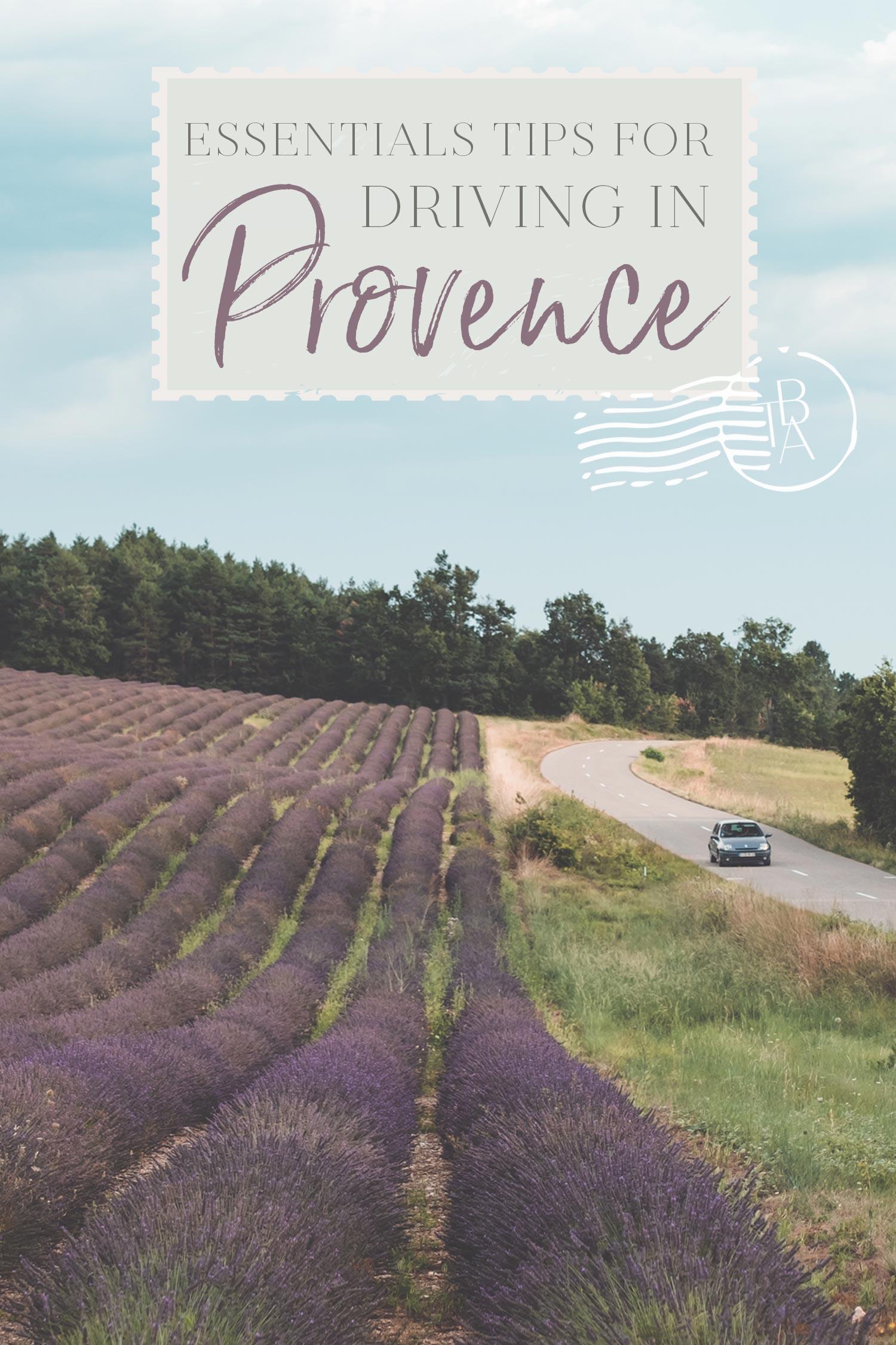
There’s so much to see when driving throughout France, but if you’ve never driven there before, it can be a little intimidating. While I love to travel through France by train, you’ll need a car to explore the Provence region properly. With countless hilltop villages and endless fields of lavender, you’ll want to able to drive and stop to explore at your own pace.
Here are my essential tips for driving in Provence helping you understand the roads better!
![]()
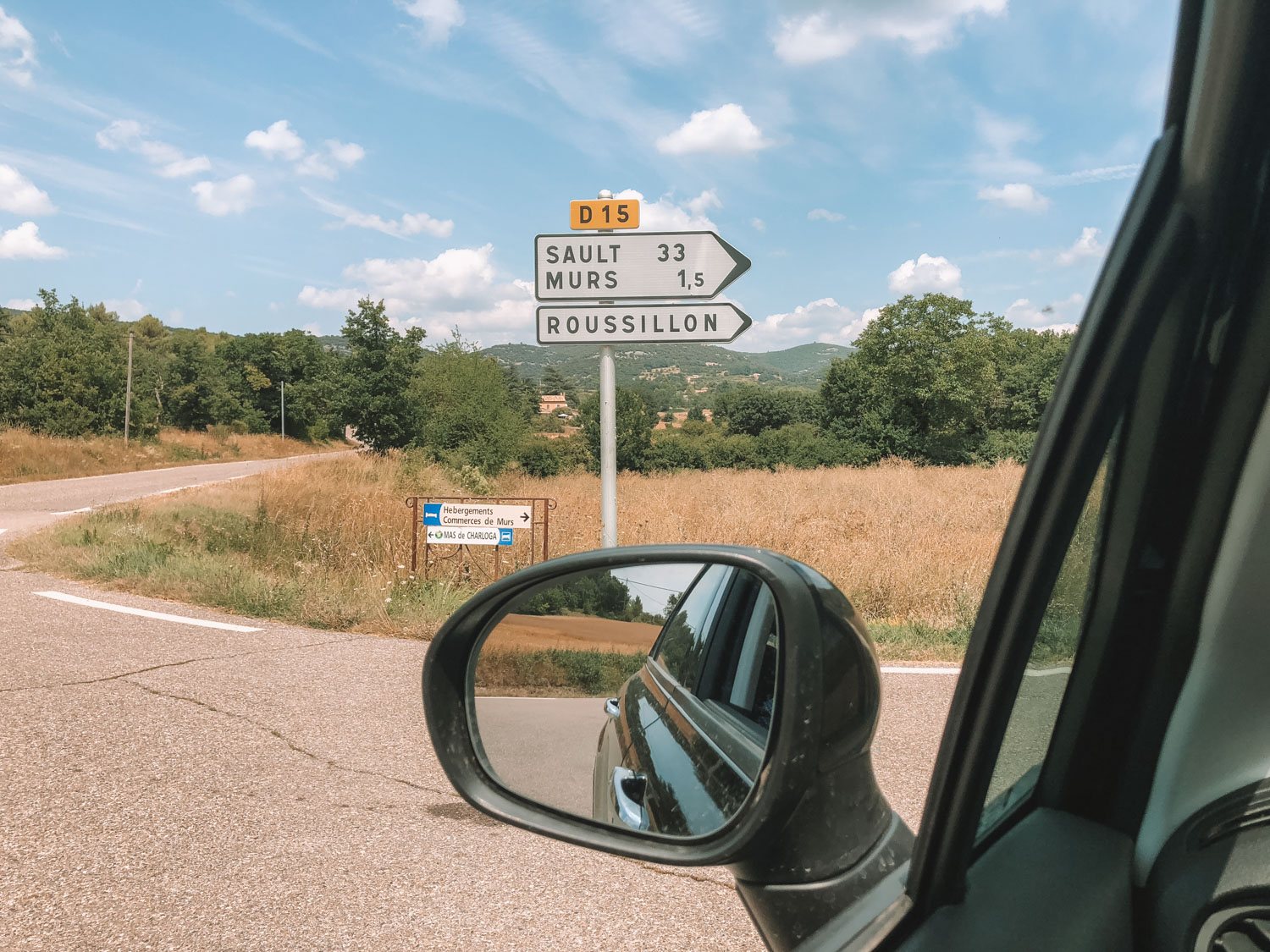
Rules of the Road
First things first, cars drive on the right side of the road with the driver on the left side of the vehicle. So, if you’re from the US, nothing is different!
If possible, when you first arrive, practice on roads without heavy traffic. This will allow you to get comfortable with the flow of traffic and the rules of the road.
![]()
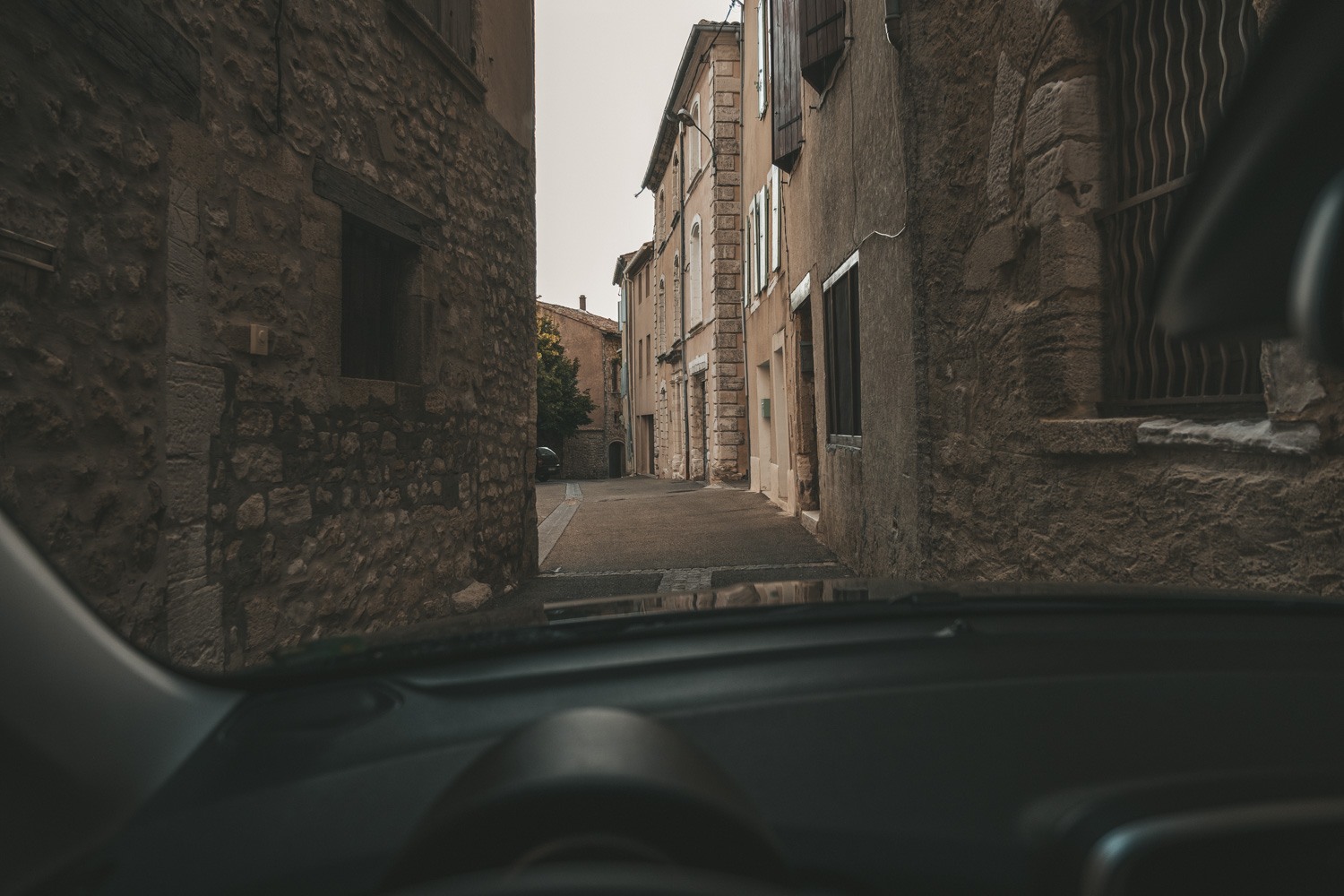
The Roads
Much like the rest of Europe, some of the smaller towns have incredibly narrow roadways that can be highly unnerving if you haven’t driven through them before. You’ll most likely find these types of roads out in the countryside. But, don’t fret, there are also plenty of highways with lots of space.
One town, in particular, Sault, was one of the sketchiest towns to drive in. I was driving a reasonably small Fiat and had to tuck in the side mirrors to get through some of the roads in the village. The countryside roads can also be incredibly windy with hairpin turns down steep hills, so mind your speed.
Those same countryside roads can be very dark once the sun goes down. There are few street lights and traffic lights, so exercise caution.
Driving from city to city in Provence doesn’t take long though. The farthest I ever drove was 2 hours in one direction, including stops along the way.
![]()

Renting a Car
Renting a car with an automatic transmission can be a little tricky. If you’re not familiar with a stick shift, be sure to book a car in advance as there are limited automatic vehicles available.
Because the roads can be a bit narrow, having a small car will make it easier to maneuver around the city. Something along the lines of a Fiat 500 works perfectly. Be aware of getting something too small though, as some of the cobblestone roads and unpaved areas are bumpy and could cause damage to the undercarriage if you bottom out.
I found the Fiat 500 to be a perfect size and, even though I was traveling alone, it could easily fit a small family comfortably. The car had backup cameras, a Bluetooth sound system, and GPS which made my ride comfortable. I wouldn’t skimp on the bells and whistles in Provence if you plan to be driving a lot (especially in the summer). It’s hot, and you’ll be in the car a lot!
![]()

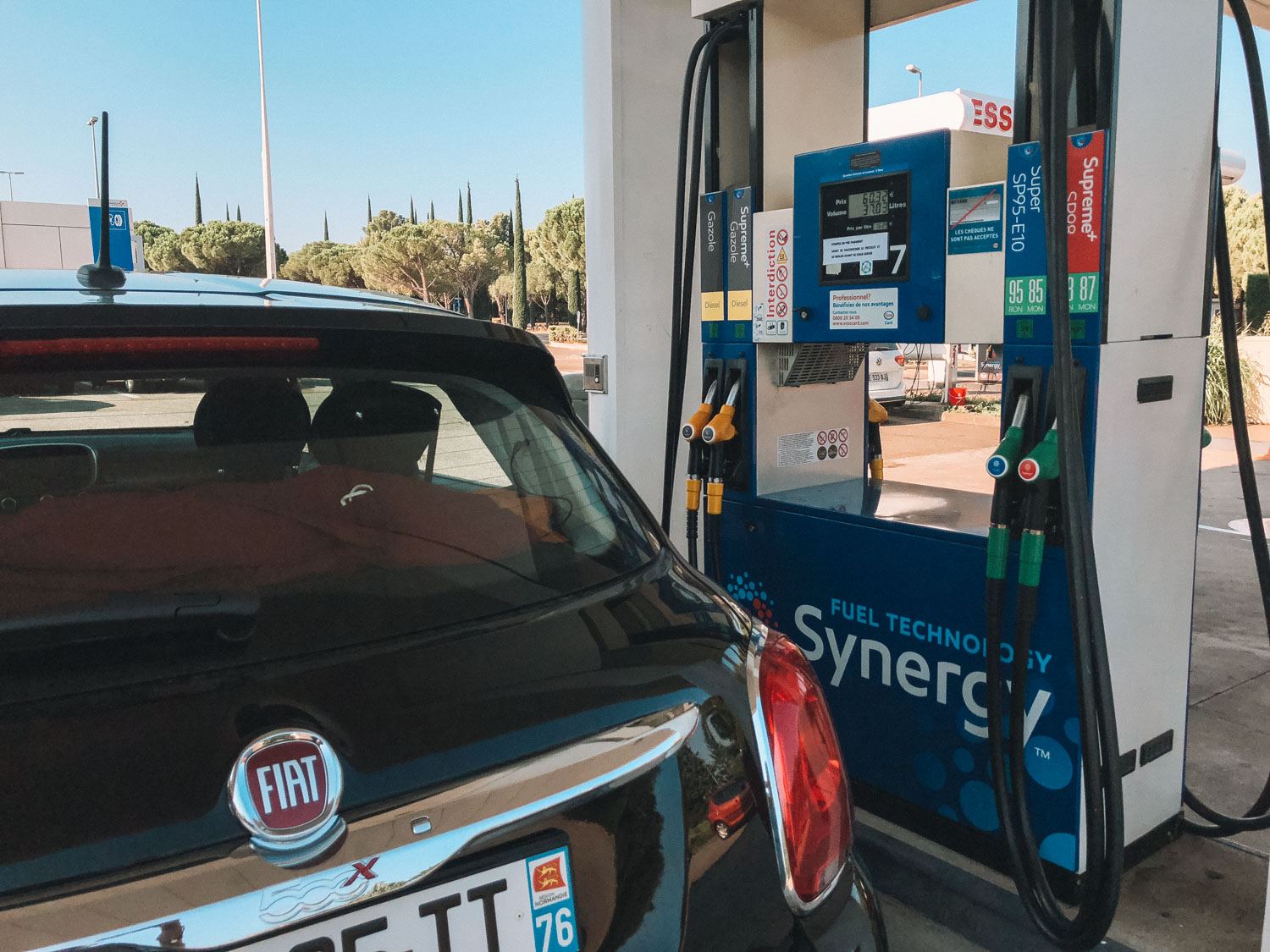
Duh Duh Duh Gas-o-lina
In the US, I’m used to paying for gas or “petrol” at the pump, so it is helpful to know ahead of time how to fill up wherever I’m traveling. In France, you will head inside to pay an attendant before you can pump. You can choose to pay a specific amount with cash or card. Or, if you want to fill up completely, you can leave your credit card with the attendant, fill until you’re full, then return inside to pay.
Don’t forget to fill up your tank before returning your rental car!
And, just how much money are you going to spend on gas? I spent about €90 on gas in 3 days (approx. 600 km).
![]()

Air Conditioning
If you’ve traveled to, or are from Europe, you’re very aware that air conditioning is a rare luxury during the summers. While most modern cars are equipped with A/C, it’s worth confirming on your rental. You’ll find that your car might be your only cold air relief while exploring the villages of Provence, as many restaurants and shops might not have more than a fan.
Trust me; you’re going to want that cool breeze the minute you get to your car. I was in Provence during a massive heat wave where most days broke 100°F/38°C! I could only walk around in the beating sun for so long before I’d need to run back to the car to blast the A/C and wipe my sweat. And, to top that off, it would take 10 minutes before I could even touch the steering wheel.
You might also want to consider grabbing a windshield reflector to help keep those car temps down.
![]()

Toll Roads
Toll roads are pretty straightforward in France. When passing through a toll, grab a ticket and drive off.
When it comes time to get off the motorway, have cash or your credit card ready. Visa, Eurocard, and Mastercard are accepted so have your wallet handy if you plan on doing a lot of driving.
![]()

Prepare for No Public Toilets
Throughout Provence, you might find yourself struggling to find a public restroom, especially a free one. This is especially true in the distant villages. I kid you not, I stopped 5 times at different gas stations, restaurants, and even grocery stores and nobody had a toilet that I could use. I wouldn’t usually recommend this, but you might need to take care of business in nature in some parts of the region.
Be sure to stock your car with toilet paper, wipes, and hand sanitizer.
![]()
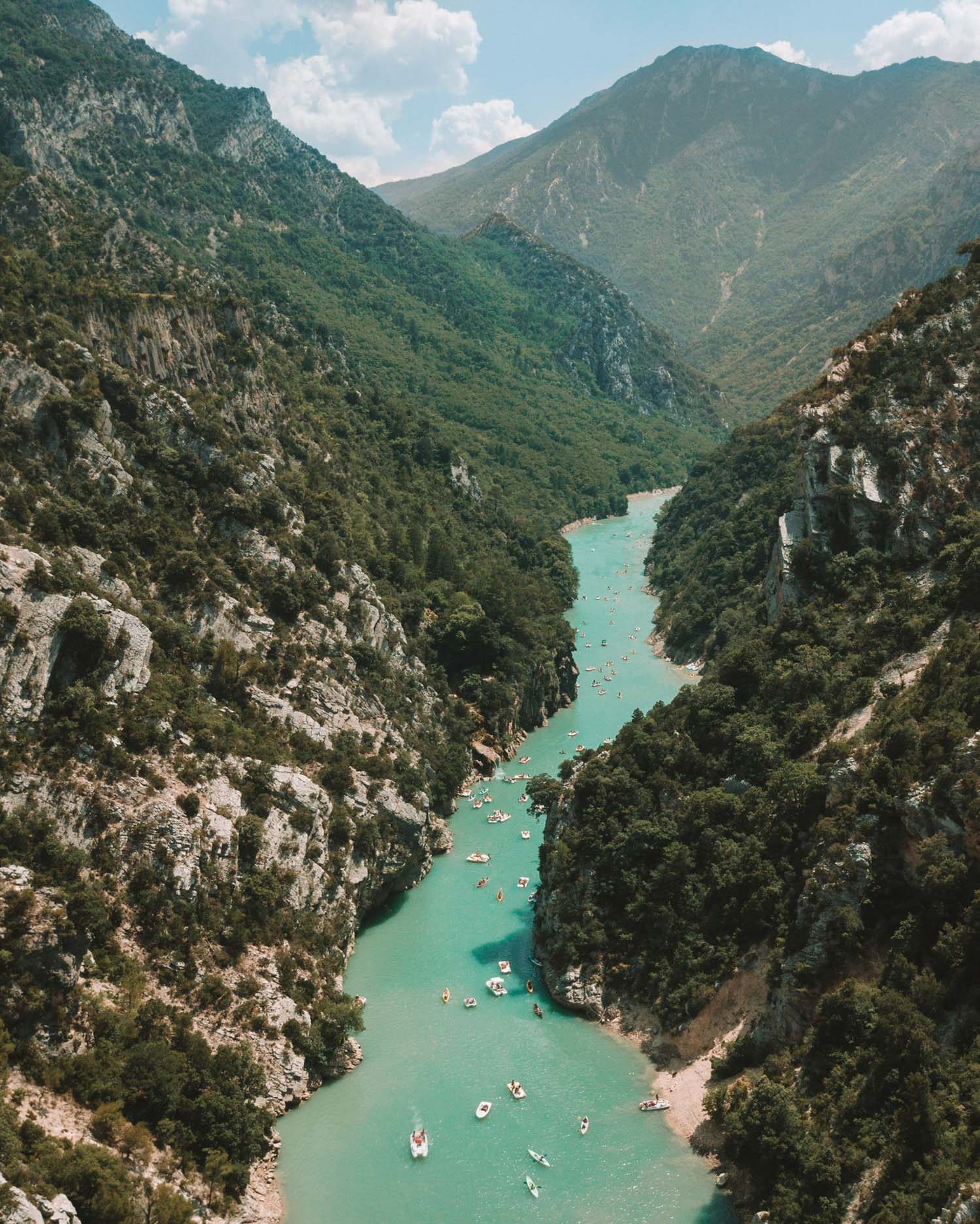
Always Be Prepared for a Swim
It might sound random, but you’d be surprised at how many swimming spots I found in places I didn’t expect. I wished I had a towel and bathing suit on hand so I could jump in at a moments notice. Spots like Verdon Gorge and Pont du Gard are must-swim spots when visiting the area and offer cool relief from the summer heat.
Keep a swimsuit and towel in your car (just in case)!
![]()
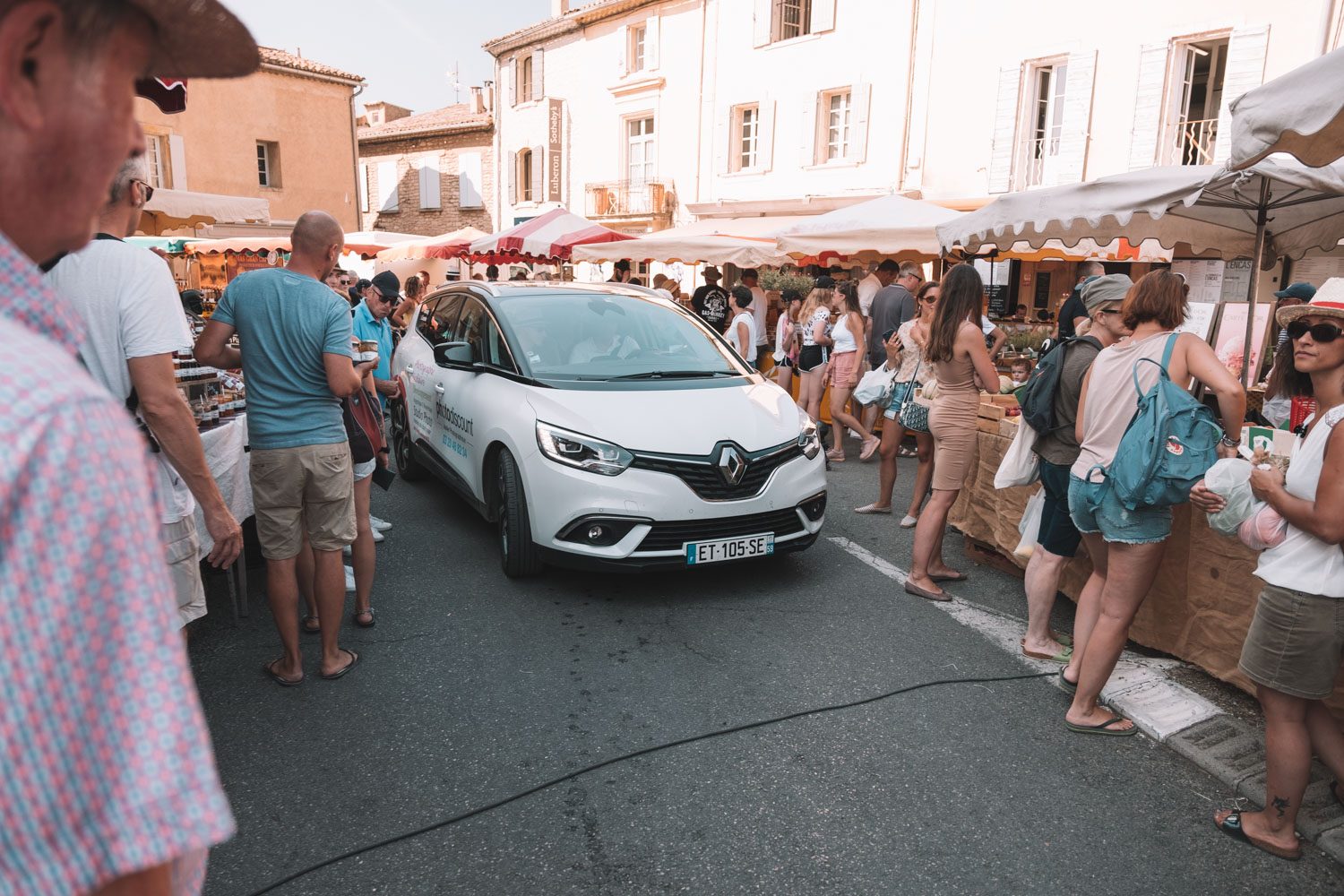
Motorcyclists and Pedestrians
Motorcycles are extremely popular in Provence, so most of the drivers are very familiar with sharing the roads. Just be sure to remember that it is legal for cyclists to filter between lanes.
Many French drivers choose to move to the right to allow the cyclist to pass by quickly.
That same attention applies to pedestrians. In many situations, walkers will not wait for the okay to cross the street and they always have the right of way.
You might come across drivers who ignore many of the crossings and go ahead anyway. The safest option is to keep an eye out for pedestrians, but try to follow the flow of traffic.
![]()
Picnic
What would a road trip be without snacks and beverages? Stock up before you leave to cut down on the stops you make during your drive. The picnic is a thing of beauty in France. With so much local bread, cheese, wine, olives, honey, fruits, and vegetables throughout Provence, you can go crazy at the local markets. I often found more people stopped on the side of the road to picnic than to eat in restaurants mid-day.
At the very least, pack a LOT of water. I stocked up on big bottles of water to keep with me at all times and refill my personal water bottle that I carried around while exploring the towns throughout the day.
One thing to keep in mind when planning these trips is that many things close mid-day (12:20-3:30 PM), so be sure to grab what you need before or after those times!
![]()

Understand the Roundabouts
There are plenty of roundabouts (also called traffic circles) throughout Provence, so if you’re unfamiliar with them, you’ll want to study up before you go. As you approach the roundabout, you’ll find there are several kinds of directional signs, pointing you in the direction you need to go.
Oncoming traffic is supposed to yield to those that are already in the roundabout.
There are both single lane and multi-lane roundabouts throughout Provence, so refer to this guide for a quick guide to navigating them.
![]()


Parking
There isn’t always a convenient parking spot when you’re driving through Provence, so be prepared to park on a curb, sidewalk or patch on the side of the road. You’ll often see cars parallel parked over curbs on the sidewalk in some of the small villages with narrow streets.
In most towns, there are parking lots, but they fill up on market days and in the afternoon. If you arrive early in the morning, you should have a better chance of finding space in a lot.
![]()
Carry Cash
Smaller villages tend to be a bit more old-fashioned, and many of them might not take credit cards. If you’re looking to shop at local markets, or buy souvenirs from small vendors, be sure to have some cash on hand.
![]()

Study the Road Signs
The road signs in Provence are pretty different from the US. If you don’t understand the road signs while driving, you will quickly become a danger to yourself and other drivers.
The two most important signs that you’ll come across are “DO NOT ENTER” and the “narrow road” sign for two way traffic. Here is some more information on the most important road signs to know in France before you go.
Some of the driving situations in Provence can be a bit nerve-wracking, especially if you aren’t familiar with the French language. Follow these tips, and you’ll have an amazing and carefree road trip!
The post Essential Tips for Driving in Provence appeared first on The Blonde Abroad.
from The Blonde Abroad https://ift.tt/2NzVBow

No comments:
Post a Comment